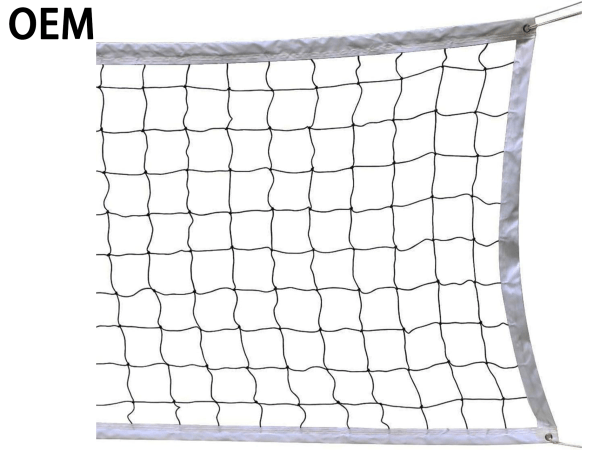Choosing the right volleyball net can be a surprisingly complex decision. Whether you’re outfitting a high school gym, a beach tournament, or your backyard, the quality of the net directly impacts gameplay, safety, and long-term cost. If you’re looking to pick a durable volleyball net that will hold up through all kinds of play, it’s important to evaluate construction materials, weather resistance, design features, and overall functionality.
This guide walks you through everything you need to know to make a smart and lasting choice—from understanding materials and sizing, to installation and upkeep. Whether you’re a beginner setting up a home game or a professional organizing a league, your net needs to match your environment and expectations.
Why Durability Matters
Volleyball nets endure more abuse than most sports gear. They are constantly tensioned, struck by fast-moving balls, and exposed to wind, sun, and moisture. A substandard net will quickly fray, sag, or snap—creating frustration, inconsistent performance, and frequent replacement costs.
A durable volleyball net means:
-
Fewer interruptions: No mid-game repairs or equipment failure.
-
Better playability: Proper height and tension improve accuracy and fairness.
-
Greater value: High-quality nets can last for years with minimal maintenance.
Whether indoors or outdoors, durability ensures safety and a consistent experience for players.
Net Types: Which One Fits Your Setup?
Before you purchase, consider where and how your net will be used. Nets are generally designed for either indoor, outdoor, or portable setups.
1. Indoor Volleyball Nets
-
Constructed with lightweight synthetic fibers
-
Optimized for minimal wind and climate interference
-
Typically used in school gyms, rec centers, and sports facilities
Ideal for: Schools, professional games, gymnasiums
2. Outdoor Volleyball Nets
-
Built to resist rain, UV radiation, and temperature changes
-
Reinforced edges, thicker mesh, and rust-proof components are standard
-
Often used in parks, backyards, or on the beach
Ideal for: Recreational leagues, beach courts, backyard setups
3. Portable Volleyball Nets
-
Easy to assemble and disassemble
-
Lightweight and compact for transport
-
Often include adjustable heights for multiple sports
Ideal for: Multi-purpose fields, casual backyard games, travel use
Choosing the correct type ensures the net won’t wear out prematurely under unsuitable conditions.
What Makes a Volleyball Net “Durable”?
Let’s break down the key components that determine durability:
1. Netting Material
-
Polyethylene: Strong, weather-resistant, and ideal for outdoor use.
-
Nylon: More flexible and durable for indoor use but requires UV protection outdoors.
-
Vinyl-Coated Mesh: Extra layer of weatherproofing; often used in premium nets.
Choose tightly woven mesh with a 1-2 mm thickness for strength and resistance to tearing.
2. Top Cable or Cord
-
Steel Cable: Best for maintaining consistent tension and reducing sag.
-
Kevlar Cord: Lightweight and ultra-strong but more expensive.
-
Rope-Style Cords: Suitable for recreational or portable use but not ideal for heavy play.
The top cable is essential for keeping the net level and secure across long distances.
3. Side and Top Tapes
-
Vinyl or Canvas Tapes: Reinforced edges prevent fraying and improve visual definition.
-
Double-Stitched Seams: Extend the life of the net and reduce damage from ball contact.
Quality nets typically include heavy-duty edge reinforcement for stability.
Dimensions: Get the Right Fit
Using the correct dimensions ensures your net meets regulatory standards and provides a fair playing field.
Standard Dimensions:
-
Net Height (Men’s): 2.43 m (7 ft 11 5/8 in)
-
Net Height (Women’s): 2.24 m (7 ft 4 1/8 in)
-
Width: 1 m (39 in)
-
Length: 9.5 to 10 m (31 to 33 ft)
While some recreational nets may vary, staying close to official measurements promotes skill development and competition readiness.
Features to Look For
When selecting a net, these specific features will increase its durability and ease of use:
1. Weatherproofing
UV-treated and water-resistant nets last longer outdoors and won’t degrade from sun or rain exposure.
2. Adjustable Tension Systems
High-quality nets include ratchet tensioners or side strings that help maintain even tension and prevent sagging during play.
3. Quick Setup and Takedown
Tool-free assembly, telescopic poles, and labeled components are ideal for portable or multi-use scenarios.
4. Compatibility
Ensure the net fits standard poles or comes with its own setup system. Some nets are designed to work only with specific brands or sizes of poles.
Indoor vs. Outdoor Durability: Key Differences
-
Indoor nets experience less wear from environmental elements, so lightweight materials suffice.
-
Outdoor nets require heavy-duty materials and rust-proof components to survive extended exposure.
If you plan to use your net in both settings, opt for one that includes multi-use mounting options and weather protection.
Maintenance Tips to Extend Lifespan
Even the best nets need occasional maintenance. Follow these tips:
-
Store properly: Keep in a cool, dry place when not in use.
-
Clean regularly: Rinse with mild soap and water to remove dirt and salt.
-
Inspect monthly: Check for tears, fraying, or loose cables.
-
Adjust tension: Avoid overstretching or allowing the net to sag.
Simple care habits can double your net’s lifespan and protect your investment.
Price vs. Value: Spend Smart
Durable volleyball nets come at a variety of price points. While inexpensive options may be appealing, they often lack reinforcement and wear out quickly.
Instead, consider:
-
Manufacturer reputation
-
Warranty length
-
Customer reviews for long-term performance
Spending slightly more upfront typically results in lower replacement costs and less hassle.
Conclusion
To pick a durable volleyball net, you must go beyond surface-level features. Think about where and how the net will be used, what materials it’s made from, and how easy it is to maintain. Whether you’re investing in a professional-level setup or simply want reliable recreational play, the right net ensures safety, performance, and lasting value.
Don’t cut corners—your players, wallet, and playing experience will thank you.
- Indoor vs. Outdoor Durability: Key Differences
- Learn how to pick a durable volleyball net that offers long-term performance and all-weather reliability. Explore expert tips on materials, dimensions, and features that matter most.
- Indoor vs. Outdoor Durability: Key Differences
Related posts:
 How To Fix System Downtime And Resolve Performance Bottlenecks?
How To Fix System Downtime And Resolve Performance Bottlenecks?
 The Power Shift: How AI Democratization is Redefining Access and Opportunity
The Power Shift: How AI Democratization is Redefining Access and Opportunity
 Maximize Uptime & Security with Houston’s Managed IT Services
Maximize Uptime & Security with Houston’s Managed IT Services
 CIF Meaning in Shipping Explained: Cost, Insurance, and Freight
CIF Meaning in Shipping Explained: Cost, Insurance, and Freight
 Why Paystub Generator Free Tools Are Gaining Popularity in 2025
Why Paystub Generator Free Tools Are Gaining Popularity in 2025
 QuickBooks Payroll Error 17337: Solutions You Need Now QuickBooks
QuickBooks Payroll Error 17337: Solutions You Need Now QuickBooks
 From Livestreams to Global Clips: How QQAI.ai Is Turning AI Video Editing into a Worldwide Opportunity
From Livestreams to Global Clips: How QQAI.ai Is Turning AI Video Editing into a Worldwide Opportunity
 Explore Latest Tech Trends in Shower Screen Sydney Glass Designs
Explore Latest Tech Trends in Shower Screen Sydney Glass Designs








